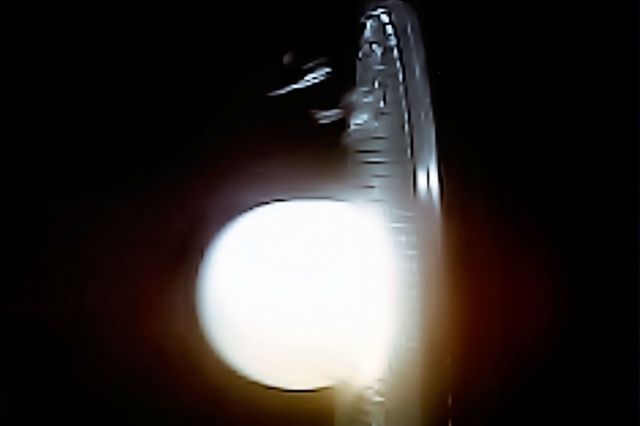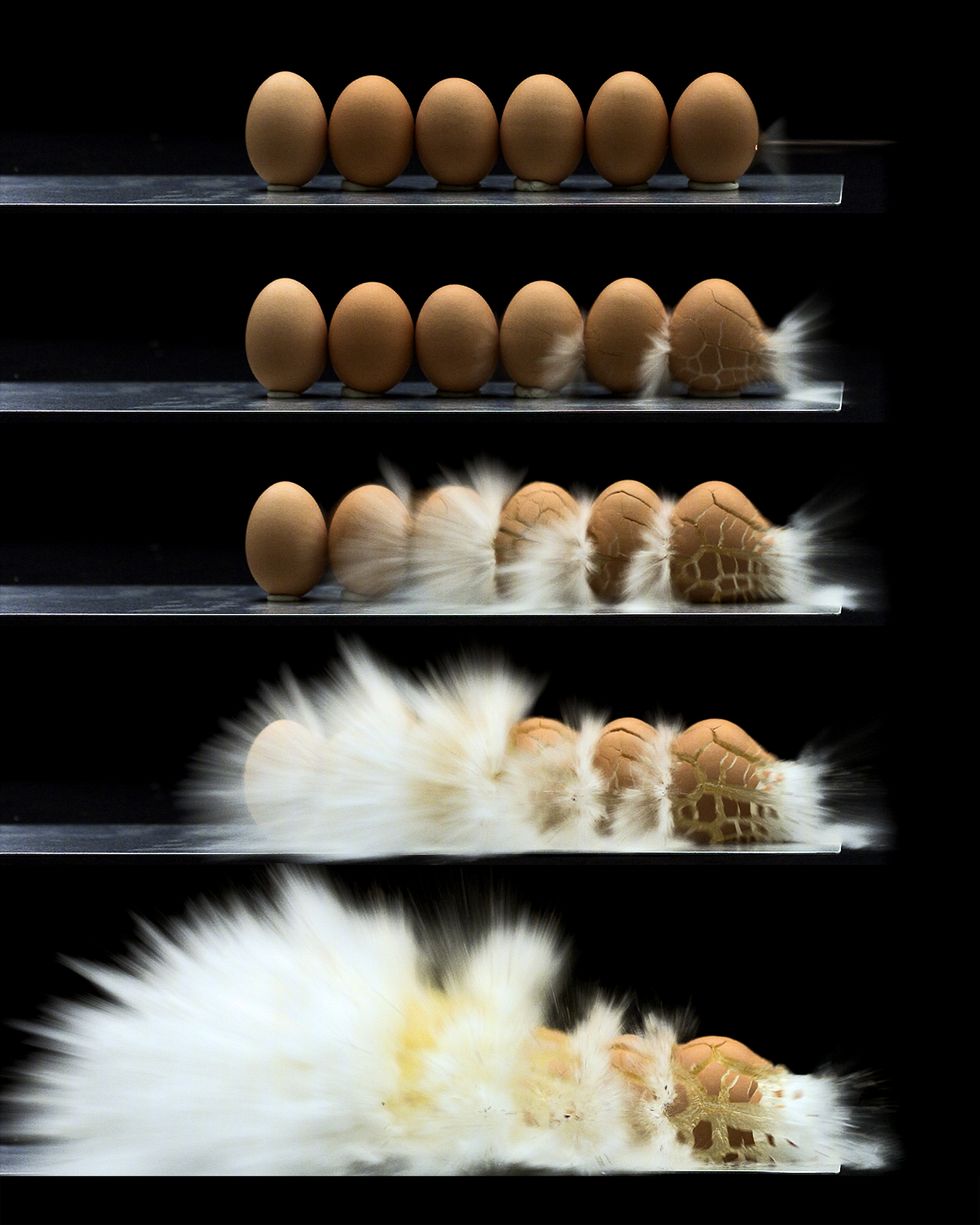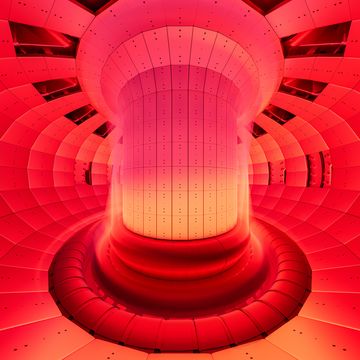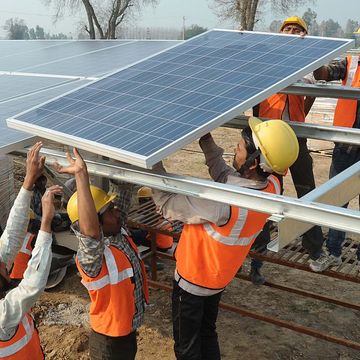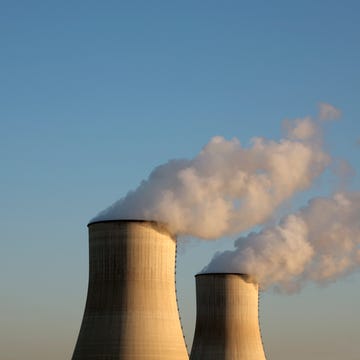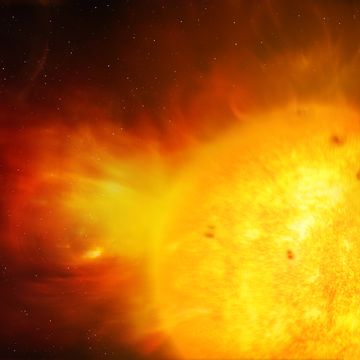The lab is deep-space quiet. A long, narrow hallway hung with fluorescent lights extends to my left. Four or five doors interrupt the flow of drywall. A few of those doors are open, the occupants of the rooms within now out in the hall and staring, ears plugged in anticipation.
A technician flips a small lever to activate the vacuum pumps on an 18-foot cannon that is tented in bulletproof polycarbonate. He's dressed casually in dark jeans and a black button-down, an ID card coolly clipped to his pants. He wears clear safety glasses and bright red protective headphones. Like the scientists down the hall, he is part of Intellectual Ventures in Bellevue, Washington—a skunkworks created by Nathan Myhrvold (Microsoft's former chief technical officer and a bit of a mad scientist), who pays some of the smartest doctors, biologists, chemists, nuclear scientists, demolition experts, and hackers to work together to create great things. Things like the cannon we're about to fire, which demonstrates technology that could change the nuclear power industry.
The pumps chitter away, sucking air from the barrel. That's the secret to breaking the sound barrier with a ping pong ball. If any air were left in front of the ball, it would crush the ball under the force of the acceleration. I press a button to release 400 psi of helium gas into the accumulator. The breech is loaded and the silence returns—until I yell "Fire in the hole!" and press the red fire button. A shattering ka-BAWOOOMM roars through the lab complex. The smell of smoke hits my nostrils. Splinters burst everywhere, crashing into the plywood backstop and bulletproof protection panels. They came from the ping pong paddle mounted two inches in front of the cannon. That paddle, a multilayered rubber-and-wood Stiga, now has a ping-pong-ball-shaped hole through its center. Considering that the little yellow ping pong ball was traveling at Mach 2.09, the paddle didn't have a chance.
The cannon is a prop, really—something to get potential investors excited about the technology. After our test fire, the scientists in the hallway are cheering. This isn't just work.
Conventional reactors use designs that remain basically unchanged since the 1950s. They require expensive enriched uranium and frequent fuel changes. The Intellectual Ventures design, from a spin-off called TerraPower, uses unenriched uranium and needs fuel changes every ten years.
What does any of that have to do with ping pong? Imagine the ping pong ball is a neutron. In a conventional reactor, a neutron knocks into an atom and releases two or three neutrons, creating heat in a slow chain reaction (see right). In the TerraPower reactor, that neutron travels more like the ping pong ball: at an insanely high speed. It bashes into atoms, freeing neutrons like the shards that fly from the demolished ping pong paddle—as many as six per collision. Those neutrons retain most of the speed of the first and go on to cause collisions of their own, freeing even more neutrons and continuing the chain reaction with exponentially higher efficiency. The design, called a Traveling Wave Reactor, unlocks about 30 times more energy, produces three to six times less waste, improves safety, and, TerraPower contends, will eventually eliminate the need to use enrichment. It also manages to use the plutonium created without having to remove it from the reaction and process it, which means the technology could be shared with rogue nations without worrying that it would be weaponized. (If the plutonium never comes out of the system, it can't be put in a missile.)
With our tests finished, the researchers head back to their labs to work on the next great project. 3ric Johanson (not a typo, he's a hacker and engineer), who worked on the cannon, turns to me with joy. Even if there hadn't been a nuclear project, he says, "we would have made the cannon anyway, just because it's cool." The group plans for the technology to be operational by 2027. In the meantime, they'll be doing a lot of testing of the ping pong cannon. Whether they need to or not.
Two Types of Nuclear Reactions
Slow
U-235 is the enriched uranium isotope. It's easily split by a neutron moving at slow speed. When the neutron hits the uranium atom, the atom divides into two fission products and releases two to three neutrons. One of those neutrons might be absorbed by unenriched uranium, U-238. One might hit another U-235 atom to continue the chain reaction. And most others will leak out and no longer contribute to the process. Enriched U-235 atoms must be added to continue the reaction. If too many U-238 atoms are present, the reaction will die.
Fast
Neutrons in fast reactions move much more quickly because they use liquid metal sodium as coolant instead of water. Sodium atoms are heavier than the atoms in water, so neutrons bounce off of them harder and retain their speed. When a neutron hits a U-235 atom, the higher velocity releases three to six neutrons. According to Nick Touran at TerraPower, one hits a U-235 atom to continue the reaction. Two or three hit U-238 atoms and convert them to plutonium. The rest are lost. Slow reactions don't have many extra neutrons, so U-238 atoms are rarely hit with another. But in fast reactions, free neutrons split the plutonium atoms, release more neutrons, and continue the reaction—without the need to remove the plutonium from the system for purification.
This story appears in the May 2017 Popular Mechanics.
